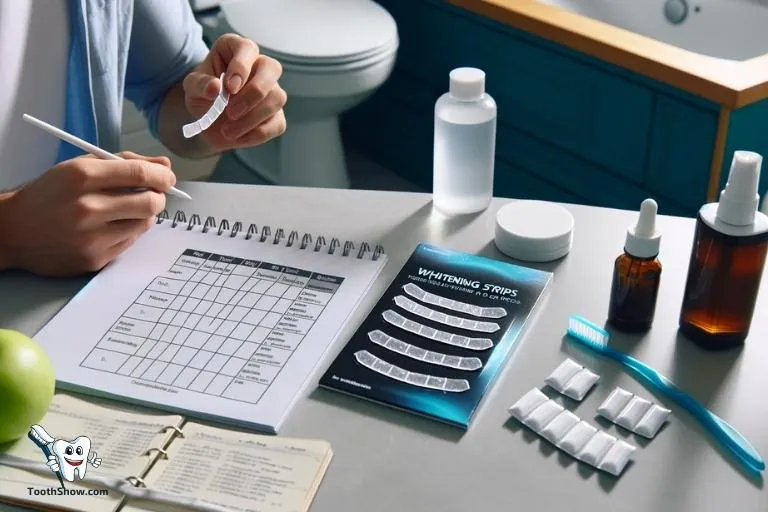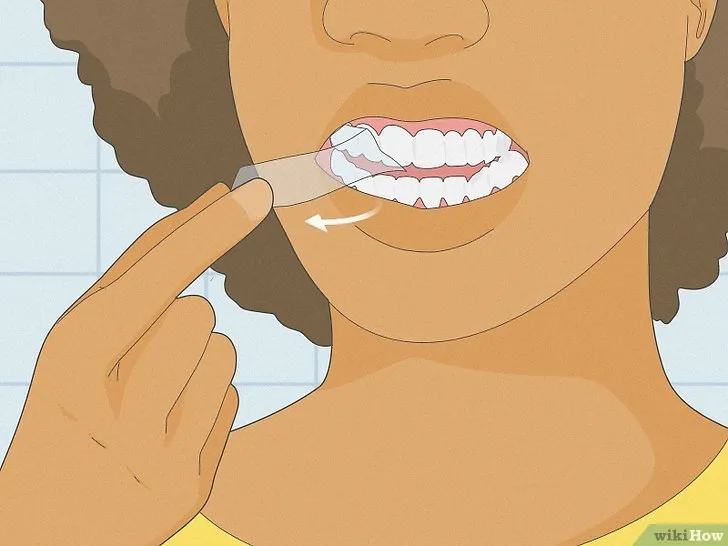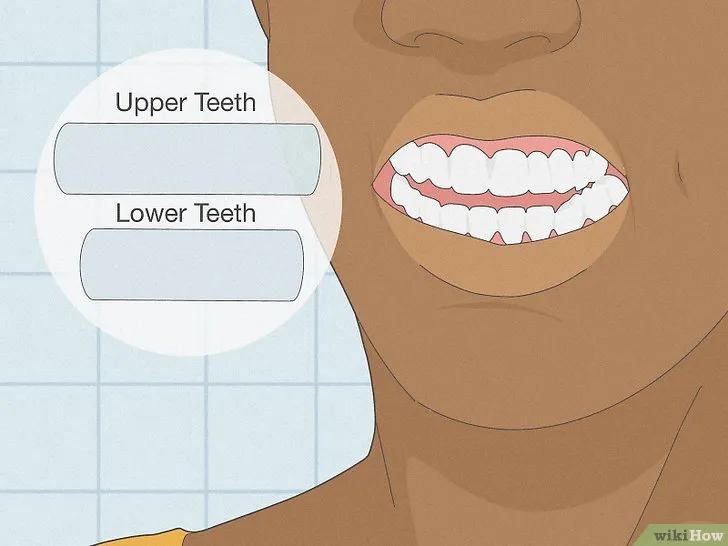Are Daily Teeth Whitening Strips Safe?
The allure of a brighter, whiter smile is undeniable, leading many to consider the use of teeth whitening strips. These strips, readily available over-the-counter, promise an easy and convenient way to achieve that coveted Hollywood smile. However, the question remains can you use teeth whitening strips every day? This guide delves into the safety aspects of daily use, providing five key facts to help you make an informed decision about your oral health. Understanding the potential risks and benefits is crucial before incorporating these products into your daily routine. Before you start using whitening strips daily it is important to understand the science behind this process and how it interacts with the teeth.
The Science Behind Teeth Whitening Strips
Teeth whitening strips typically utilize hydrogen peroxide or carbamide peroxide as the active whitening agents. These chemicals penetrate the enamel, the outer layer of your teeth, to break down stain molecules. The effectiveness of the strips depends on the concentration of the peroxide and the duration of application. The process is designed to oxidize the stain molecules, making them less visible and resulting in a brighter appearance. However, the same process that whitens teeth can also potentially cause side effects, so a careful approach is necessary. Understanding the mechanisms involved is crucial to evaluating the safety of daily use.
How Whitening Strips Work

The strips adhere to the surface of your teeth, ensuring close contact with the enamel. The peroxide then goes to work, breaking down the organic compounds responsible for discoloration. This is a chemical process that is most effective when the strip is in direct contact with the teeth, which is why proper application is so important. The duration of application varies between products, so it is important to follow the manufacturer’s instructions. It is important to know that while whitening strips can be effective, they are not a permanent solution and are susceptible to the foods and drinks that are consumed.
Fact 1: The Concentration of Whitening Agent
The concentration of the active whitening agent significantly impacts both the effectiveness and the potential risks of teeth whitening strips. Over-the-counter strips usually contain lower concentrations of hydrogen peroxide or carbamide peroxide compared to professional treatments administered by a dentist. Higher concentrations often lead to faster and more dramatic whitening, but they also increase the likelihood of side effects such as tooth sensitivity and gum irritation. Daily use of strips with a higher concentration of the active ingredient may accelerate these adverse effects. Always check the product label and be mindful of the amount of the active ingredient to mitigate potential damage.
Fact 2: Potential for Tooth Sensitivity
Tooth sensitivity is a common side effect of teeth whitening, and daily use of whitening strips can exacerbate this issue. The peroxide in the strips can penetrate the enamel and reach the dentin, the layer beneath the enamel. Dentin contains microscopic tubules that lead to the nerves in the tooth. When these tubules are exposed or irritated, it can cause increased sensitivity to hot and cold foods and beverages. This sensitivity can range from mild discomfort to sharp, intense pain. It is important to assess your teeth’s current sensitivity level before starting daily use and monitor your teeth closely for any changes.
Managing Sensitivity

If you experience tooth sensitivity, there are several strategies to manage it. Using toothpaste designed for sensitive teeth, which contains ingredients like potassium nitrate, can help block the tubules and reduce sensitivity. Avoiding extremely hot or cold foods and drinks during the whitening process is also recommended. Reducing the frequency of strip use, or shortening the application time, can help alleviate sensitivity. If the sensitivity becomes severe or persistent, it is crucial to consult a dentist to rule out any underlying dental issues and receive professional advice.
Fact 3: Impact on Gum Health
The chemicals in teeth whitening strips can also affect the health of your gums. Direct contact with the peroxide can cause irritation, leading to inflammation and, in some cases, even chemical burns. This is particularly a concern if the strips are not applied correctly, and come into contact with your gums. Symptoms include redness, swelling, and discomfort. Over time, repeated irritation can compromise gum tissue, increasing the risk of gum disease. Therefore, it is important to ensure precise application, avoiding contact between the strips and the gums. It is also important to choose a reputable brand, as some strips may contain higher concentrations of chemicals.
Gum Irritation and Inflammation
To minimize the risk of gum irritation, carefully follow the instructions for application. Make sure the strips are placed only on your teeth, avoiding contact with the gum line. If you experience any irritation, discontinue use and consult your dentist. Rinsing your mouth with water after using the strips can also help remove any residual chemicals. Using strips that are too long can also cause irritation by contacting the gums. Regular dental checkups can help monitor your gum health. Make sure to choose strips that are designed to minimize the risk of gum irritation, and do not use the product if the packaging is damaged.
Fact 4: Enamel Erosion Concerns

While teeth whitening strips are generally considered safe when used as directed, there is a potential risk of enamel erosion with overuse. Enamel is the hard, protective outer layer of the tooth, and it can be gradually worn away by the acidic nature of the whitening agents. Although the erosion caused by whitening strips is usually minimal, daily use over an extended period may accelerate the process. This can lead to increased tooth sensitivity and a higher risk of cavities. The extent of erosion depends on various factors, including the concentration of the whitening agent, the frequency of use, and individual tooth characteristics.
Minimizing Enamel Damage
To minimize the risk of enamel erosion, it is essential to follow the manufacturer’s instructions and avoid exceeding the recommended application frequency. Consider using strips with lower concentrations of the active ingredient or alternating whitening treatments with other products that promote enamel health. After whitening, use a fluoride toothpaste to help remineralize and strengthen the enamel. Regular dental checkups allow your dentist to monitor the condition of your enamel and detect any early signs of erosion. Also, remember that not everyone is a candidate for daily whitening; some people have naturally thinner enamel, and this could make daily use too damaging.
Fact 5: Realistic Expectations for Results
It is important to have realistic expectations about the results you can achieve with teeth whitening strips, especially when used daily. While these strips can effectively remove surface stains and brighten your smile, they may not provide the same dramatic results as professional teeth whitening treatments. The degree of whitening will depend on the type and severity of the stains, as well as your natural tooth color. Daily use may provide incremental improvements over time, but it is important to remember that there are limitations. If you are looking for significant changes, you might consider consulting your dentist about other whitening options.
Maintaining Your Whitened Smile

Once you achieve your desired level of whiteness, maintaining your results is crucial. This involves a combination of good oral hygiene practices and lifestyle choices. Regular brushing and flossing are essential to remove food particles and plaque, which can contribute to staining. Avoiding or minimizing the consumption of stain-causing foods and drinks, such as coffee, tea, red wine, and dark berries, can help preserve your results. Consider using a whitening toothpaste or mouthwash to help maintain brightness. Regular dental checkups and cleanings are also essential to monitor your oral health and address any potential issues.
